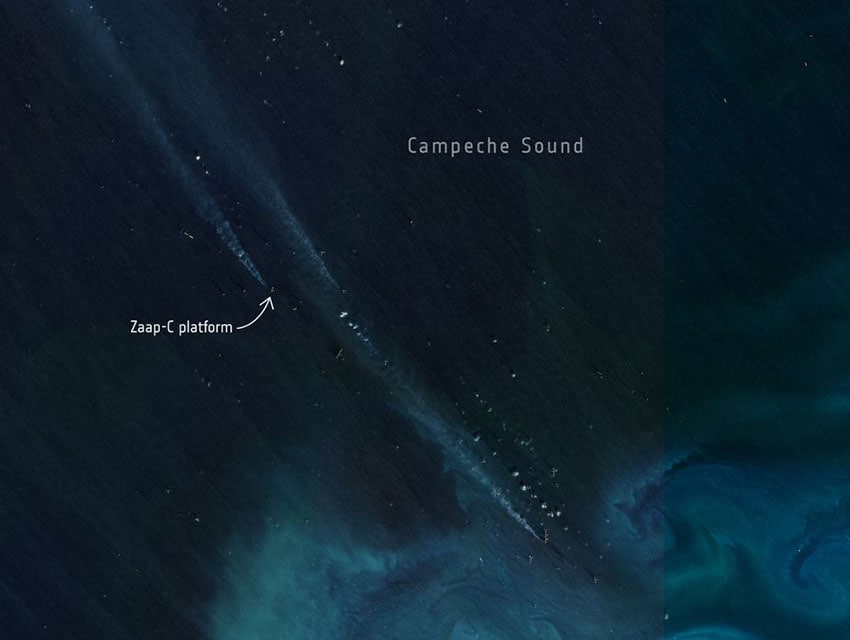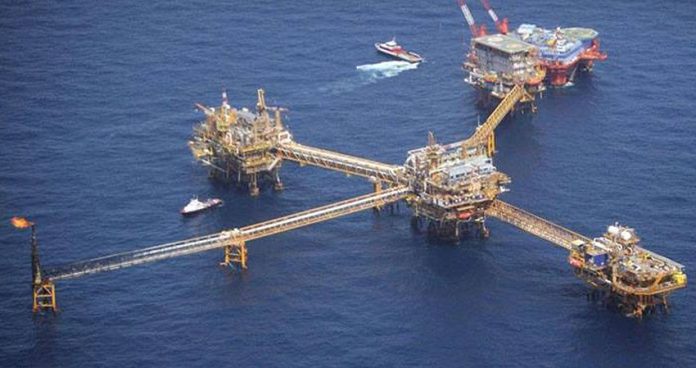Scientists who concluded that Pemex released some 40,000 tonnes of methane into the atmosphere from a Gulf of Mexico oil and gas platform last December have defended their study after the state oil company rejected it last week.
A team of European scientists published a paper earlier this year that details an “ultra-emission event” at Pemex’s Zaap-C platform detected using data from European Space Agency satellites.
Pemex responded last Wednesday, saying that a government-commission study confirmed there “there were no large emissions of methane” at the platform.
The state oil company said in a statement that last December’s emissions had a 22% concentration of methane, while the remainder was made up of nitrogen and other gases “that don’t affect the environment.”

Only 2,224 tonnes of methane – 5% of the amount cited by the scientists – was emitted, Pemex said.
Two of the four scientists who used the satellite data to detect methane plumes from the Pemex platform asserted that they definitely didn’t mistake nitrogen for methane.
Itziar Irakulis-Loitxate and Luis Guanter of Spain’s Polytechnic University of Valencia said in a statement sent to the news agency Reuters that nitrogen is not visible to the sensors they used to detect the methane leak. “There is no way of mistaking one for the other,” they said. “The startling emissions we reported were 100% methane, plain and simple.”
Methane, the main constituent of natural gas, is much more harmful to the environment than carbon dioxide and is considered a major contributor to global warming. Irakulis-Loitxate and Guanter told Reuters that the satellite methods used in their study are shedding light on emissions that would otherwise go unreported.

“Methane is a huge challenge across the [gas and oil] industry. Ideally, operators would embrace this new information,” the scientists said.
Guanter said in an interview with the newspaper El País earlier this year that reducing methane emissions was crucial to combating climate change. “In the short term, it’s the gas to attack,” he said.
Irakulis-Loitxate and Guanter told Reuters that their satellite observations also showed that the flare at the Zaap-C platform – which is used to burn off excess natural gas and limit the damaging impact of methane – remained unlit for 17 days last December, whereas Pemex said in its statement it was unlit for just a few hours.
“This is a matter of simple visual confirmation,” the scientists said. “Data from two other satellites confirm that the unlit flare was emitting large volumes of methane during that same period.”

The same scientists who reported last December’s “ultra-emission event” say a comparable methane leak occurred at the same location last month. Reuters said it received data from the scientists earlier this month “that showed there was another leak of a similar magnitude from the same location during six days in August.”
Daniel Zavala, a senior scientist at the United States-based nonprofit Environmental Defense Fund whose work specializes in the measurement and characterization of emissions from the global oil and gas system, said in July 2021 that methane was leaking from Mexican gas and oil operations at “alarming and worrying” levels.
President López Obrador has pledged to reduce Mexico’s methane emissions, but an analysis conducted for Reuters found that flaring – which releases carbon dioxide and methane into the atmosphere – increased 50% in Mexico between 2018, the year the president took office, and 2020. Many flare sites are facilities operated by Pemex.
López Obrador, whose energy strategy depends heavily on the continued use of fossil fuels, faces international pressure to reduce methane emissions and promote clean, renewable energy. U.S. Special Presidential Envoy for Climate John Kerry has raised both issues with the president during recent visits to Mexico.
